Two years since Russia’s invasion, Ukraine’s forces are bloody but unbowed
Despite the death and destruction, the spirit of the Ukrainian people still burns bright, writes Kim Sengupta

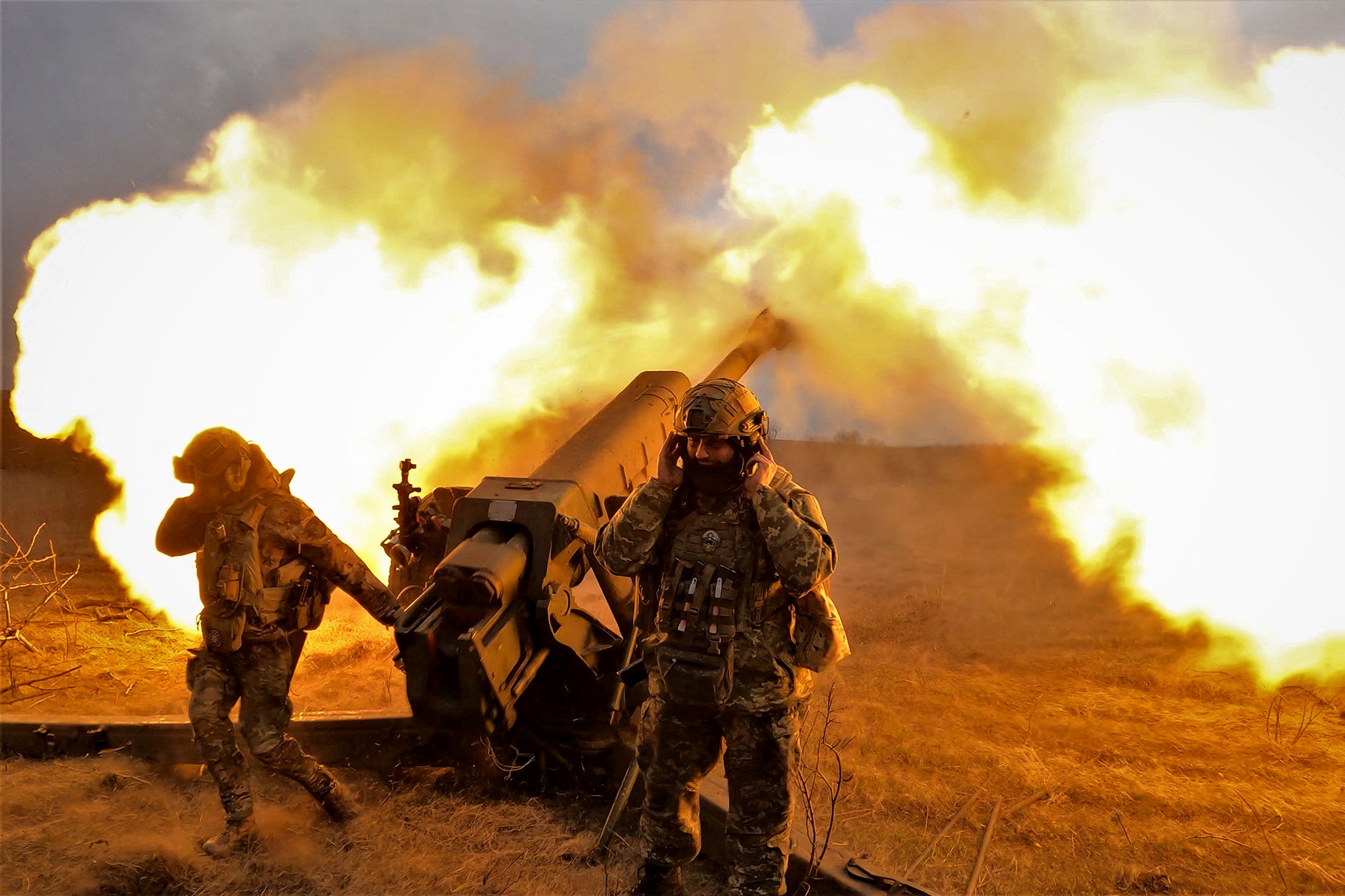
Your support helps us to tell the story
From reproductive rights to climate change to Big Tech, The Independent is on the ground when the story is developing. Whether it's investigating the financials of Elon Musk's pro-Trump PAC or producing our latest documentary, 'The A Word', which shines a light on the American women fighting for reproductive rights, we know how important it is to parse out the facts from the messaging.
At such a critical moment in US history, we need reporters on the ground. Your donation allows us to keep sending journalists to speak to both sides of the story.
The Independent is trusted by Americans across the entire political spectrum. And unlike many other quality news outlets, we choose not to lock Americans out of our reporting and analysis with paywalls. We believe quality journalism should be available to everyone, paid for by those who can afford it.
Your support makes all the difference.In 2014, after Russian-backed separatists had violently captured swathes of territory to the east, Ukrainian forces dug in at the industrial town of Avdiivka to block a key route into the rest of Donbas. It soon became one of the deadliest points on the entire frontline with clashes taking place daily.
Three years later, after the signing of the Minsk Agreement laid a supposed pathway to peace, Avdiivka erupted again. Dozens of soldiers died in the intense fighting and the city was hollowed out, but for all the blood spilled neither side gained much ground.
Notably, the separatist bombardment that started the battle were fired just hours after the newly elected Donald Trump received a call to congratulate him on his victory from Vladimir Putin in Moscow.
The White House said the call was a “significant start to improving [the] relationship between the United States and Russia that is in need of repair”. The Kremlin described it as paving the way for a “partnership”.
President Trump, in a phone call to the Ukrainian leader at the time, Petro Poroshenko, said he was willing to help “restore peace along the border” but refused to blame the Russians or the separatists for the strife.
American ambassador to the UN, Nikki Haley, however, took a more robust line, placing responsibility for the violence squarely on the Kremlin. “The dire situation in eastern Ukraine demands clear and strong condemnation of Russian actions,” she declared.
In Avdiivka, as in the rest of Ukraine, the US stance became a talking point. Major Serhei Kravchenko, an artillery officer told me during a break in directing mortar rounds that things “would go back to normal”.
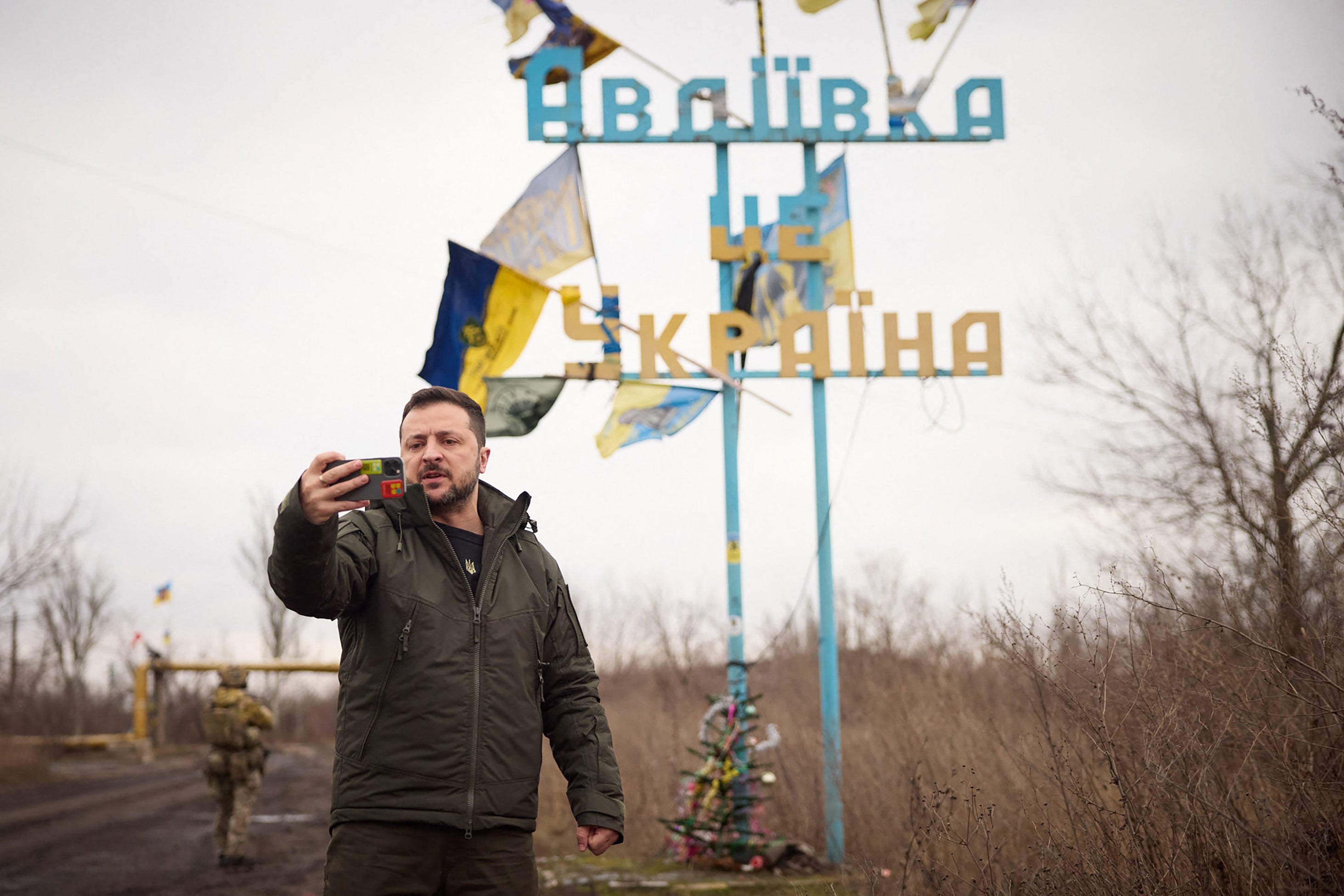
He said: “Mr Trump, he says lots of things. But at the end he’ll realise the Russians cannot be trusted. Anyway, there are plenty of experienced people in his government who would make sure that support to Ukraine continues.”
A little while later I asked Eduard Basurin, a senior spokesperson for the Donetsk Peoples Republic, a man close to the Kremlin, about the separatist view of Mr Trump. “He speaks what he believes, he knows how to talk to people. He should not listen to his aides, he should listen to himself, his friends, and his family. That is what we think, that is what they think in Moscow”, he stated.
Ten years on, the US is fast approaching another election with Mr Trump surging ahead of Joe Biden in opinion polls in several battleground states.
The former president has called on Republican congressmen and women to block a $60bn (£47bn) military and economic assistance package for Ukraine; he has declared he would welcome Russian attacks on Nato countries which did not pay their way; he has even failed to condemn the Kremlin over the death of Alexei Navalny in his Arctic prison, comparing it instead what he claims he is “suffering” in the face of a raft of civil and criminal cases in America.
Ms Haley has criticised Mr Trump and has expressed her worry about Russian advances in Ukraine and the capture of Avdiivka. But her challenge to Mr Trump for the Republican nomination seems all but over.
Alarm bells are ringing in Ukraine at the prospect of a Trump sequel. So much so that Volodymyr Zelensky has asked the former president to bear witness to the reality of Russian aggression first-hand and has offered to take him to the front line. Those invites have so far fallen on deaf ears.
Ukraine lost Avdiivka last week, at an estimated cost of a thousand Russian troops killed and injured every day. The capture was heralded as a great triumph by Moscow. Critics in the West claimed the reverse showed US and American support for Kyiv has not paid-off and there should be a ceasefire.
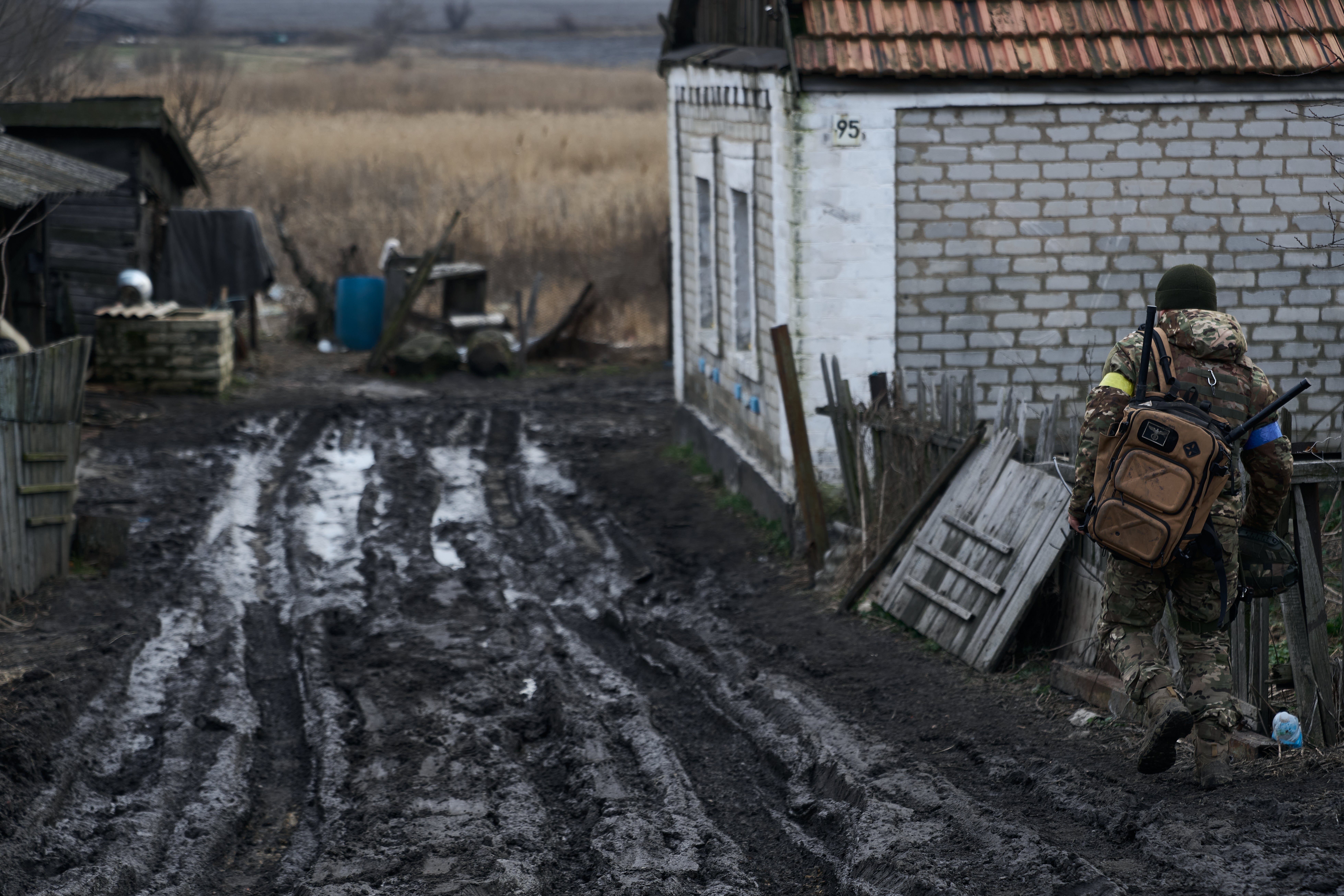
One of the key reasons the Ukrainians pulled out of Avdiivka was lack of ammunition. With the Ukraine bill stuck in Congress no supplies had come from the US since January. Speaking at his position just outside the town, a sergeant with an infantry regiment spoke of the frustration at not being able to match Russian fire with fire.
“We could send back four rounds to every 10 they sent, then it dropped to two rounds. It was impossible to keep fighting like that, we were losing too many people”, said the sergeant, who has the call sign Mandrake.
“This is not new, we have been suffering this problem for a long time now, the situation is very serious. Our friends in America and Europe need to keep supporting us. I know the war has been going on for a long time, but we are fighting for the West against our common enemy. We have shown what we can do if we have enough weapons and ammo.”
On the second anniversary of the invasion on Saturday, it must be stressed that Mr Putin has failed in his goal of conquering Ukraine. And that has been due to the extraordinary valour of the Ukrainians in this long and bloody war which began with few giving them a chance of survival.
In the weeks before the invasion, with the international community finding it difficult to accept that a war would start in the heart of Europe, citizen volunteers carried out combat drills in the woods around Kyiv.
They ranged in age from young teenagers to pensioners in their 70s. A few had military experience; most did not. There were some hunting rifles and shotguns, others carried paintball guns and antique muskets. There were humorous articles in the international media about the Dad’s Army taking on the Russian might.
When the invasion came, the Territorial Defence Force (TDF) and assorted self-defence forces played a key role in saving the Ukrainian capital and other major cities and turning the tide of war.
Claims that Russia would replicate what they had done in Chechnya were confounded. Those of us who were in Kyiv at the time were told that Ukraine’s capital would be reduced to rubble – like Grozny. There were images of a 64km-long (40 miles) Russian armoured convoy heading our way. We were repeatedly told in government briefings from London and Washington to get out of town.
But Kyiv did not fall. We witnessed Moscow’s forces being driven back while the country’s second city, Kharkiv, just 32km (20 miles) from the Russian border, withstood fierce ground and air assaults for weeks.
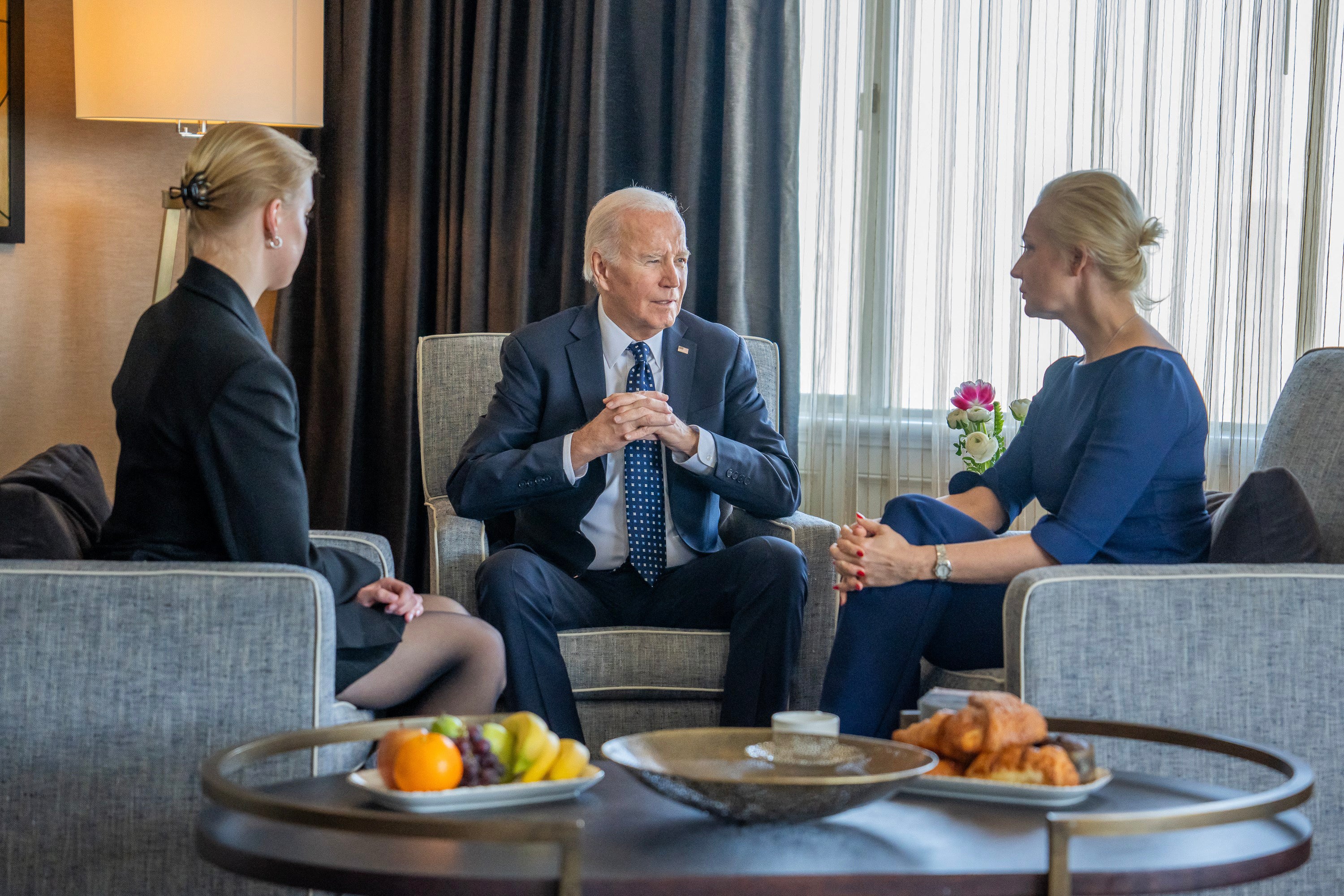
The retreating Russians often left behind carnage – Bucha, Izium, Lyman. Executed corpses lying in streets, while others had been thrown into mass graves; stories of mutilation, rapes, and forced disappearances.
Modern cities – Mariupol, Kharkiv and Melitopol, among others – were pounded by artillery, missiles and aircraft. We witnessed the destruction inflicted by advanced weaponry in crowded urban centres, civilians killed and maimed in smashed and burnt homes, the shattered streets. The Second World War was being revisited, with all its mayhem.
But then, from spring last year, Ukrainian troops began to retake the towns and villages around Kharkiv and pushed to the border. As I travelled with a unit retaking the last hamlets, Major Nikolai Pavlyuk, who serves in a volunteer brigade, exclaimed with a broad grin: “It’s so good to be on the front foot and making them retreat, getting back territory. In the past, we were blowing bridges to slow the Russians; now they are blowing bridges to try and delay us. It is such a great feeling.”
Western powers were now predicting victory. The Biden administration declared “winning the Battle of Kharkiv” would be followed by many others. Nato secretary general Jens Stoltenberg said there was a growing belief that “Ukraine can win this war”. Admiral Sir Tony Radakin, the head of the British military, stated that “Ukraine’s independence is now guaranteed.”
However, by the time summer came, the conflict had taken yet another turn. The Russians, deploying heavy artillery, were again outgunning the Ukrainians. We experienced the pulverising effect of the relentless shelling in the trenches. Captain Yuri Kaluzny, a marine, told me: “The shelling just never stops. They focus on a target, pour on fire, and then move forward. We simply haven’t got enough weapons to counter that, so we are losing a lot, dead and injured, and I think we’ll end up by losing a lot of territory.”
Mr Zelensky despaired: “Russia wants to destroy the Donbas.” It seemed only a matter of time before the whole region slipped into Russian control.
Then an unexpected Ukrainian offensive in the autumn brought great gains for Ukraine with the recapture of Lyman in the Donbas, Kupyansk in the Kharkiv oblast, and Kherson in the south. Russian morale appeared to be on the verge of collapse. Some of those most hawkish about the Ukraine war now rounded on the military establishment.
Yevgeny Prigozhin, the boss of the mercenary group Wagner, and Ramzan Kadyrov, the Chechen warlord, joined in the rising chorus of criticism of the Kremlin high command. His fighters led the assault on Bakhmut, which we saw, in successive visits, being systematically razed to the ground.
At the first anniversary of the war last year a procession of international leaders arrived in Kyiv – the most important of whom was Joe Biden – his presence seen as providing a powerful symbolic assurance that the US and the West will stand by Ukraine.
But the frontline had lapsed again to a bloody stalemate. A much-anticipated offensive in the summer, with Ukrainian forces replenished with Western weaponry, was meant to reverse that with a thrust breaking the Russian lines in the south and clearing the path to Crimea.
Then came the most astonishing twist yet. Prigozhin, who had been involved in bitter clashes with the Kremlin security hierarchy, launched a military coup. The world watched aghast as his Wagner fighters marched on Moscow. Mr Putin’s attempt to recreate the Russian Empire looked like ending with another Tsar being overthrown.
The putsch failed. Mr Putin is supposed to have forgiven Prigozhin in the aftermath and the Wagner boss appeared in a number of official engagements. But he was a dead man walking, killed three months later along with his senior commanders when their plane was blown out of the sky.
Bakhmut, with the mass deaths for its capture leading to the grim sobriquet of “meat grinder”, fell to Russia, a legacy for Prigozhin who had sent thousands of his fighters to death there in human wave attacks. There were also gains for Moscow in the Kharkiv oblast in areas around the strategic hub of Kupyansk.
The much-publicised Ukrainian summer counteroffensive failed. Mr Zelensky sacked his defence minister, Oleksii Reznikov, followed by all six deputy defence ministers. This month he fired General Valerii Zaluzhnyii, the highly popular head of the armed forces, who had said the frontline had returned to a grinding stalemate.
The fall of Avdiivka had come amid an acute ammunition shortage for Ukraine. None had arrived from the US with the Ukraine support bill stuck in Congress. The European Union has managed to provide just half of the million rounds it pledged by March this year.
The Biden administration maintain the bill will be passed. The EU says it is making drastic moves to rectify the shortfall. Both Russia and Ukraine are expected to carry out an offensive in the spring, probably in what will be the last push of the war.
The people of Ukraine are, unsurprisingly, weary of the death and destruction. But their spirit burns bright. The mood of resilience and reflection was exemplified by three elderly men digging snow outside their homes in Hlushivka, a village in Donbas largely emptied by Russian shelling.
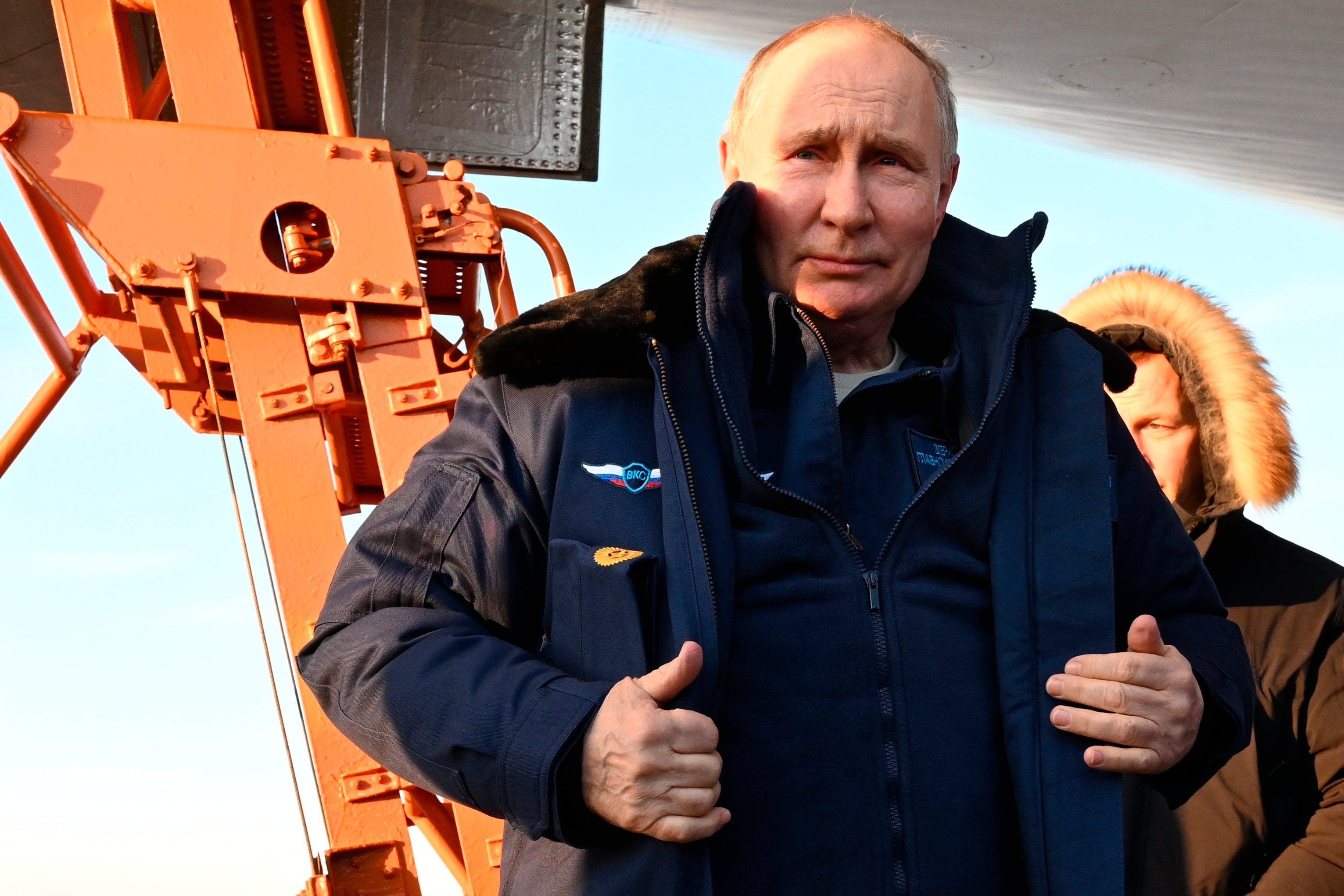
Vasyl Olinichiuk, 60, a former soldier who served in Afghanistan when Ukraine was part of the Soviet Union, said: “It is strange to find an army which I was once a part of is now fighting us. I look at young Russian soldiers and wonder. Most of us didn’t know what the hell we were doing in Afghanistan, and I don’t think this lot know what they are doing here either. No army can live with that for long.”
Stanislav Shyryi declared he had no intention of leaving: “I am 76 years old, this is my home, and I am staying. Even if the Russians come back, it’ll be Ukrainian again one day. This is Ukraine, our country, the days of empire are over. History is on our side.”
Join our commenting forum
Join thought-provoking conversations, follow other Independent readers and see their replies
Comments